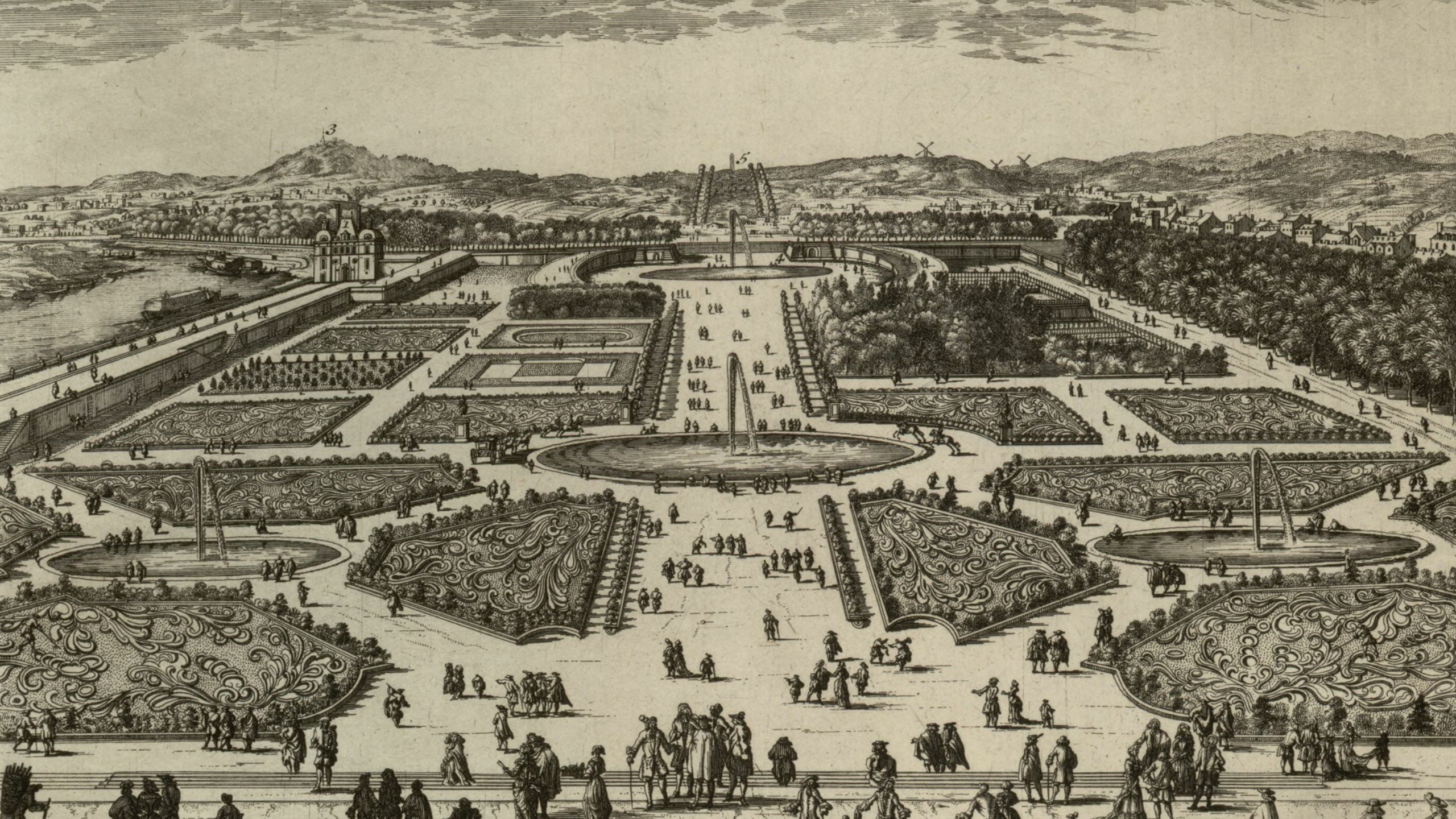The Champs-Élysées emerged from a perspective traced by Le Nôtre, from a profoundly visual and spatial act on the territory. Do you nevertheless consider that it can only be understood from a philosophical standpoint?
We colloquially speak of le jardin à la française as the jardin cartésien, which is both description and metaphor. (This designation is truly unjust, for we owe this most famous of European garden forms to André Le Nôtre, but after all, it would be difficult to turn his name into an adjective.) If one had to describe such gardens in a word, it would be “geometrized:” in an epoch where the ideal was to reduce knowledge to modes of mathematics—the mathesis universalis of René Descartes—geometry took on new aesthetic and ethical dimensions. The geometry of such gardens featured lengthy straight axes in symmetrical formations, emphasis on the vanishing point at the horizon, a panoptic layout organized in conjunction with the architecture of the chateau, topiary trimmed in clear and distinct geometric forms, and a general monochromaticism so that the chromatic would not compete with the formal (not unlike the manner in which some architects feel that displaying art in a building distracts, or even detracts, from the architecture!) Such is an aestheticization of geometry, manifesting the tension between the complexities of the Baroque and the purities of the Classical, between the organic and the geometric, between the natural and the artificial.
As Le Nôtre left few writings concerning his projects, it is impossible to know at what moment and in what form the intuitions for his major inventions arose, but it is clear that his aesthetic was in great part the sublimation of both his daily environment and his course of studies. For he came from a family of gardeners, and his father was responsible for the Tuileries, where the family lived for some time, eventually purchasing a tract of land and constructing a house and gardens on what would become, under his son’s supervision, the Champs-Élysées. Thus the formal garden was André Le Nôtre’s first vision of the world, one that he would ultimately bring to aesthetic epiphany and national glory.
Having studied gardening within the family, as well as math, painting, and architecture at the Louvre, André Le Nôtre received a formation which would permit him to combine art and science in the perfection of landscaping. We should remember that as the most humble vegetable garden is directly related to the peasant hut, so is the family manor to the adjacent park, and the Tuileries to the Louvre. The issue of scale is of the essence, and part of the genius of his first major creation, Vaux-le-Vicomte, was that it encompassed, but did not surpass, the limits of human perception. Le Nôtre’s spatial gesture was a function of his visual heritage.
It is amusing that the initial question of this interview ends with the phrase optique philosophique (“philosophical standpoint”), intended in the informal sense of manière philosophique (“philosophically”), though in fact one might take the phrase literally and remember how the art historian Erwin Panofsky, in La perspective comme forme symbolique (1927), showed how the optical forms embedded in linear perspective— developed in Quattrocento Italian painting, and key to the French formal garden—have innate theological and metaphysical implications, and thus truly constitute an optique philosophique, an optical system with philosophical overtones.
Beyond Le Nôtre, do you see the Champs-Élysées as en emblematic expression of the perspectival system that is employed in French formal gardens?
From its origin in 1667, when Louis XIV charged Le Nôtre with the project of creating a road to connect the Palais des Tuileries and the Château de Versailles, the Champs-Élysées (thusly named in 1694) was related to Versailles both aesthetically and practically: it offered a vast perspective as seen from the Tuileries, on the scale of the gardens extending outward from the château of Versailles ; and it served as a Grand-Cours to link the Tuileries with the Domaine Royal de Saint-Germain-en-Laye and then beyond to Versailles. Since the Tuileries was a royal palace, the perspective formalized by this major axis represented, practically and formally, a royal vision, and was consequently emblematic and symbolic.
Linear perspective is a manner of seeing, of organizing, of representing, of creating. Within this system, every point of view has a vanishing point, the two points connected by a straight line of sight. A straight line on a flat plane is the shortest distance between two points; a straight road best serves its practical purpose; efficient garden plantings are generally done in straight lines; the rectification of an urban labyrinth by the use of grands boulevards (a project inaugurated at the time of Le Nôtre and epitomized by Baron Haussmann’s transformation of 19th century Paris) ameliorates transport, aids in crowd control, and symbolizes power. As such, the strong central axis within linear perspective functions as a potent symbol. Le Nôtre did not invent the central axis – which has existed as a sign of power from time immemorial—but inscribed it into a vast symbolic structure dedicated to the glorification of Le Roi-Soleil.




